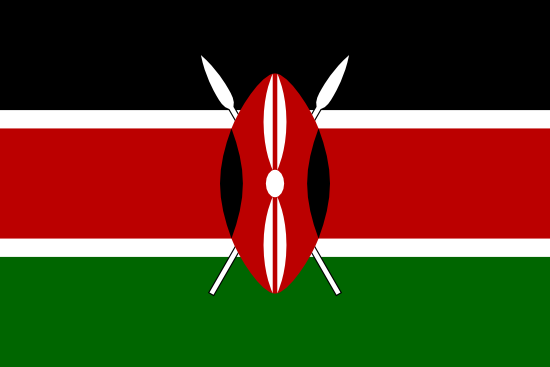number of green spaces" in Kenya, but based on the context of our previous discussions (e.g., Key Biodiversity Areas, land use, and conservation), I’ll assume you’re seeking a count of green spaces relevant to biodiversity or conservation efforts, such as parks, forests, or managed natural areas, rather than urban recreational spaces alone (e.g., Nairobi’s parks). However, since "green spaces" isn’t precisely defined here, I’ll interpret it broadly to include areas under conservation that contribute to ecological health—aligning with KBAs, protected areas, and conservancies—while grounding the answer in available data as of March 02, 2025. If you meant something more specific (e.g., urban parks), please clarify!
Defining Green Spaces in Context
"Green spaces" can encompass:
-
Protected Areas: National parks, reserves, and forest reserves gazetted by the government.
-
Community Conservancies: Community-managed lands for biodiversity and livelihoods.
-
Private Reserves: Privately owned conservation areas.
-
Other Managed Ecosystems: Forests, wetlands, or coastal zones not formally gazetted but under active conservation.
Given our focus on KBAs and conservation, I’ll count discrete sites or management units rather than total area, emphasizing biodiversity significance.
Counting Green Spaces
-
Formally Protected Areas:
-
National Parks and Reserves: The Kenya Wildlife Service (KWS) manages 23 national parks and 28 national reserves on land, plus 4 marine national parks and 6 marine national reserves (overlapping with KBAs). Total terrestrial units: 51 (23 parks + 28 reserves). Marine units: 10 (4 parks + 6 reserves).
-
Forest Reserves: KFS oversees numerous forest reserves (e.g., Arabuko Sokoke, Kakamega), but no exact count is consistently updated. The 2023 Kenya Forest Service report lists over 250 forest blocks, though many are small or fragmented. Major reserves overlapping with KBAs (e.g., Mount Kenya, Aberdares) are often counted within park boundaries, so I’ll estimate 20-30 significant forest reserves as distinct green spaces.
-
-
Community Conservancies:
-
The Kenya Wildlife Conservancies Association (KWCA) reported 230 conservancies in 2023, covering 9.04 million hectares (~90,400 km², 16% of land). These are distinct management units, often protecting KBAs outside parks (e.g., Ishaqbini, Mara North), and qualify as green spaces under conservation.
-
-
Private Reserves:
-
Notable examples include Ol Pejeta (360 km²), Lewa (250 km²), and Borana (~130 km²). Estimates suggest 10-15 major private reserves, though smaller ones exist. These are biodiversity-focused and often align with KBAs (e.g., Laikipia-Samburu).
-
-
Marine and Coastal Green Spaces:
-
Beyond MPAs (10 units), Locally Managed Marine Areas (LMMAs) like Kuruwitu (~0.3 km²) and others along the coast (24 by 2015) add community-managed marine green spaces. Estimate: 20-25 LMMAs, though some overlap with MPAs.
-
-
Other Conservation Sites:
-
ICCA/SSG Sites: Indigenous and Community Conserved Areas (e.g., Yala Swamp, Tana Delta) and Site Support Group-managed KBAs (e.g., Dzombo Hill) add smaller units. The 2023 KBA Status report highlights efforts at ~10-15 such sites outside formal systems.
-
Total Estimate
-
Terrestrial Protected Areas: 51 (parks/reserves) + 20-30 (forest reserves) = 71-81.
-
Conservancies: 230.
-
Private Reserves: 10-15.
-
Marine Areas: 10 (MPAs) + 20-25 (LMMAs) = 30-35.
-
Other Sites: 10-15.
-
Raw Total: 351-406 green spaces.
-
Overlap Adjustment: Many KBAs (e.g., Tsavo, Mara) span parks and conservancies, and marine overlaps occur. Conservatively, ~50-70 units may overlap, reducing the unique count to 300-350.
KBA Alignment
-
Of 67 KBAs, 45-50 are under some conservation (30 protected, 15-20 via conservancies/private efforts). Green spaces exceed KBAs because not all conservancies or reserves are KBAs, but they still contribute to biodiversity.
Critical Notes
-
Data Gaps: No 2025 census lists all green spaces; I’ve synthesized KWS, KWCA, and Nature Kenya data, assuming minimal change since 2023.
-
Definition Variability: If "green spaces" meant urban parks (e.g., Nairobi’s 826 public spaces per UN-Habitat 2020), the count would differ, but biodiversity focus fits our thread.
-
Scale: Counting discrete sites (not area) aligns with "number," though some are vast (Tsavo: 22,000 km²) and others tiny (Kuruwitu: 0.3 km²).
Final Answer
Approximately 300-350 green spaces in Kenya are under some form of conservation as of March 02, 2025, including 71-81 protected areas (parks, reserves, forests), 230 conservancies, 10-15 private reserves, 30-35 marine areas, and 10-15 other managed sites. This reflects a broad interpretation of biodiversity-focused green spaces, adjusted for overlaps, and exceeds the 45-50 conserved KBAs due to additional non-KBA conservation efforts. If you intended a narrower scope (e.g., urban parks), let me know!
